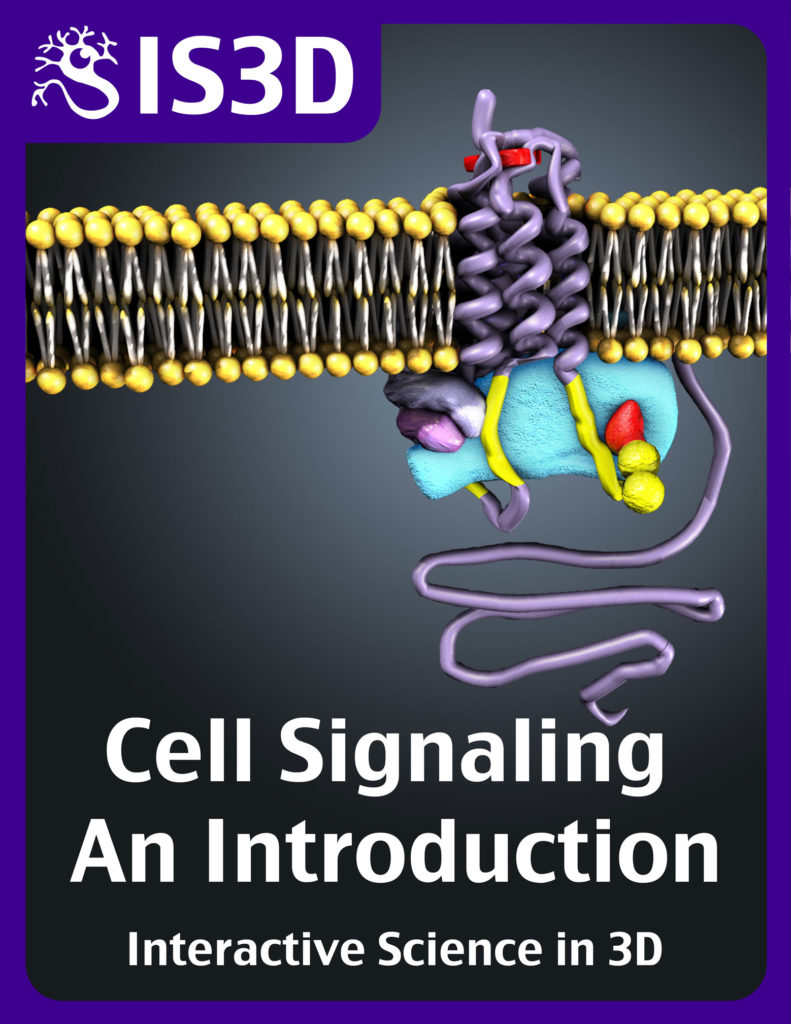Athens, Ga. – Understanding how cells function is a cornerstone of biology—and also a topic that many students experience trouble mastering. Using a combination of 3-D models and animations, a group of researchers, educators and digital artists at the University of Georgia have published the iBook “Cell Signaling: An Introduction” to help students understand the dynamic molecular world of cells.
The cell signaling iBook is the first in a suite of complementary materials designed to help students learn about how the nervous system works. Released in August through Apple’s iTunes textbook store and designed for the iPad, the interactive book includes picture galleries, a dozen 3-D rotatable models of molecules and proteins, more than 50 animations and 80 self-assessment items.
The production of the iBook was funded by the National Institute of Mental Health through a Small Business Innovative Research grant awarded to UGA startup company IS3D LLC, titled “Stimulating Young Neuroscientists And Physiologists in Science Education (SYNAPSE).”
“Teachers told us that their students are often frustrated when they try to understand cell signaling, as they’re stuck with having to use standard textbooks and still images,” said Jared Jackson, who leads the SYNAPSE project team and is a digital media professional in the college’s department of large animal medicine. “So we responded by making an interactive product to help engage the students during this learning process.”
“The processes involved in cell signaling pathways are incredibly dynamic, with interactions taking place among ligands, receptors and effectors; and conformational changes in these components playing key roles,” said Dr. Jim Moore, a professor of large animal medicine and president of IS3D. “Unfortunately, these processes have traditionally been taught using static, 2-D drawings. The 3-D animations and interactive 3-D models in this iBook change all of that, letting students today see what their teachers have envisioned for years.”
IS3D is a partnership of seven UGA faculty and staff members: Moore; Tom Robertson, associate professor of physiology and pharmacology; Dr. Scott Brown, professor of small animal medicine, and Dr. Cynthia Ward, professor of small animal medicine, in the College of Veterinary Medicine; instructional designer Flint Buchanan in the Office of Online Learning; Mike Hussey, associate professor of theatre and film studies, in the Franklin College of Arts and Sciences; and Casey O’Donnell, a telecommunications professor formerly in the Grady College of Journalism who recently moved to Michigan State University.
IS3D’s mission is to create a range of interactive learning products focused on teaching scientific principles to students in kindergarten through 12th grade. They are currently working on interactive guides to help students learn about the electrical properties of cell membranes and nerves and how signals get transferred from one nerve cell to another.
“Jared’s team is producing some really amazing products,” Robertson said. “There will be a combination of products including educational games and interactive apps for mobile devices. All of them will tackle subjects that are vital to understanding how the nervous system works, but that students traditionally struggle to understand.”
The research was supported by the National Institute of Mental Health, award 5R43MH096675.
For more information on IS3D, see http://is3d-online.com/.
